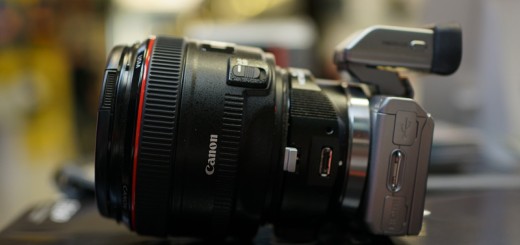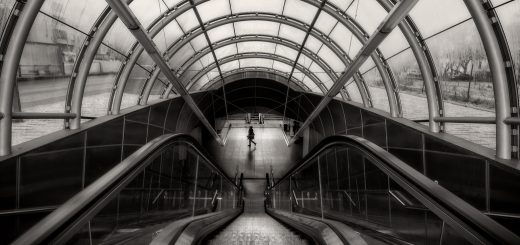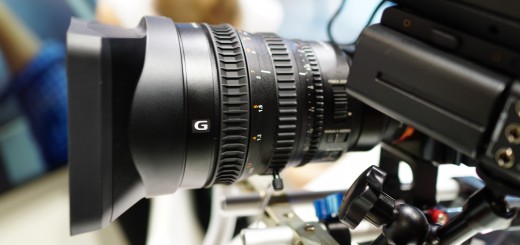Sony Alpha A7 (ILCE-7) and Sony Alpha A7r (ILCE-7r) vs rest of theworld. Part 2.
There are already many reviews about both cameras, so I will go through main topics just briefly and will try to get to the point from the user perspective. Which camera is better for what, what are real life differences between them, and how they compare to other alternatives? All that with image samples that should say more than my chit chat.
Opening the box:
Boxes for both cameras are of the same size and they slightly differ in design. Sony made A7r camera box a little bit more refined with more empty black space that should say – luxury. Well, it doesn’t. They could save few bucks and keep boxes the same.
Comparing boxes with the NEX 7 original black box, is like comparing Rolex with Timex box. Never-mind, it’s just a piece of a cardboard, right? It’s only that you expect a little bit more “pro” or “luxury” feeling when you pay for those cameras. Instead, you get average hair dryer kind of packaging.
Inside the box, you will find something that Sony consider to be user instructions in all languages except the one from the country where you live, instructions how to connect your iA7 with your iPhone or using NFC to your fancy Android (one of approximately two who supported that technology), camera in white plastic textile bag, battery (almost empty, so that you have to wait 5 hours before you start to play with your camera), cables with adapter to charge your batteries in camera and two AC socket adapters, one for UK and the other one DIN (for the rest of Europe). I think that it is great to have UK socket adapter, because if you get the contract to shot Manchester United players at Old Trafford every Sunday night, you’ll be ready out of the box.
On contrary, why would you need external battery charger for your 36mpx FF camera? As a soccer mom, you are probably used to charge your camera on your night table before week-end.
This is the moment, when you start to feel a bit hollow. You are not disappointed yet, you just expected slightly more intensive experience. But what a hack, take your camera in your hand and turn it around!
Design:
I believe that Sony finally found a real meaning of the word – Hybrid Camera with its A7 and A7r. They are perfect example of what you might expect when you combine rangefinder body with the SLR pentaprism, magnesium alloy with cheap looking plastics, superior sensors with gimmicks such as orange metallic ring around mount.
At certain point, they could also glue the OVF up on the EVF, because it can’t make any more harm to the overall look.
Don’t get me wrong, you might like it. But be sure to see it in reality and hold it in your hands, before you buy it. I never thought that camera design will matter to me, but than I never had such ugly cameras either.
Like Rafael Nadal, turning his bottles with the label in the right direction, I have to be careful to look at my A7/r from quarter profile view, from which they looks acceptable, otherwise I will be seriously tempted to cut off that terrible hump on the top and smash the body with the hammer, to make it look slightly better.
The most annoying is not the design itself. I am sure there are people who would like it, who would even say that A7/r s are the most beautiful cameras they ever had, but than, there are also people who would say same about Yugo with few plastic spoilers in the fluorescent color.
Most annoying is the only possible reason for doing so – pandering to the customers.
Behind the look of the camera, I can see marketing and not design department. Sony cameras should look like DSLR, and DSLRs are cameras with pentaprism. Majority of customers (that means – we) are stupid to see things like that, so Sony needs design that will be comparable at the first sight with Canikon market leaders. Put the pentaprism there and be done with it.
NEX is dead baby, NEX is dead…
I can just hope, that Sony will keep their NEX line style alive, no matter that they killed NEX name. But we shell know soon…
Build quality:
They are both (A7 and A7r) built ok, but far from outstanding. They both feel hollow and they lack that solid feeling that one might expect from this price point cameras. In comparison to Olympus OM-D EM-5 that I also own, they feel cheaper, which might be at the end just a feeling. Looking at the construction diagram i.e. here, everything seems well made and assembled.
A7r feels a bit better due to the front plate being made of magnesium. (A7 has plastic front plate), but that is not a big difference.
I would like to have cameras slightly tougher and probably little bit heavier, because of the balance with most lenses. You can read about that hollow feeling in almost all reviews that I have seen, so it is nothing new what I am saying. Maybe that feeling will change with use…
After few weeks of using both cameras, I am still more afraid to mount heavy lens on them and put them on the tripod than I was with Sony NEX 7 or even small NEX 5N. That is rather strange, but it probably describe well – that “hollow” feeling thing.
But everything depends on POV. While in direct comparison with NEX 7, I feel that both A7 and A7r took a step back, when I got my Sony FE 3528 Zeiss lens delivered by courier, I asked him to wait till I unpack it, because I was 100% sure, that the box is empty.
OMG – for 1000 USD (where I live) I got a toy-like looking, hard to feel in hand, 49mm plastic filter thread Zeiss!?! lens. WTF!!! If this thing doesn’t make sharp images from corner to corner, I will send it back in a split of a second. And I will keep bashing it, because that is just a bit over the line, that I am ready to tolerate when it comes to the first impression.
So for the money, I got products that doesn’t really feel or look luxury, neither Pro, and that come in a cheap looking paper-box. Where is all magic than?
I hope it is in IQ…
Resolution differences and ISO noise.
Lot of my friends keeps asking me which camera to choose A7 or A7r. Most of them are gearheads and they keep changing cameras faster, than my wife change shoes. To give them any answer it won’t really help, because they will try both anyway. But for many others, I would try to show on examples what that sensor size and megapixel race might mean in a real life. One of the main marketing message that A7 and A7r are bringing with them is – larger sensor means better IQ. And by better IQ people usually mean higher resolution (more detail). Better sensitivity is another selling evergreen of the full frame club. Finally, one of the favorite war hammers in the battle of the camera system fans (sometimes I have a feeling that it is not about sensor sizes), is shallower DOF.
Let’s take a look if we can find an objective point of view, to better understand differences…
After short introduction in the first part of this rolling review, here are more complex results of testing against each other and their competitors.
Let me just repeat few things about this ISO 12333 chart… I decided to use Leitz Elmarit Macro R 60mm/2.8 lens, because I wanted to include Nikon D800E in the test, and I didn’t want to give it the advantage of hosting native mount lens.
All cameras are somehow equal now, using third party lens.
I also choose macro lens, because it is optimized for short focusing distances and because it has flat focus field with minimum of aberrations.
To shot JPEGs doesn’t make much sense for comparison test, because that way we would compare jpeg engines and different standard settings that each producer and camera model has. But I was more interested to see, how much resolution I am able to squeeze from the cameras in the similar conditions.
However, there is also problem with RAW files. RAW software developers are using different presets as their standard, and thus resulting images might look quite different too. This mainly affect sharpness, contrast and white balance read out, but the differences are sometimes very significant and they might lead to the wrong conclusions. You might check it for yourself, opening A7r file in Sony IDC software and using Adobe LR 5.3 RC or Adobe DNG converter or Camera RAW. Files in Sony IDC look much sharper at the first glance, than when opened with Adobe. To make the comparison as valid as possible I used Adobe DNG converter for all files, and than imported them in LR 4.3, where I made WB equalization and very slight exposure compensation (up to max +0.33 EV). Finaly, files were exported to Photoshop for creating comparable formats and exported to JPEG using “Web and Devices” at the best quality settings.
Putting those files in comparison, posed another usual problem for consideration – should I up-size smaller images to match the size of the larger ones (A7r and Nikon D800E), or should I do it other-way around. There is no valid answer for this dilemma, so I did both.
Finally, there are several ways to think about resolution using different format cameras. If one is shooting BIF (bird in flight :-)) with a 300mm lens i.e., he/she should be able to squeeze more detail in a resulting image from NEX 7 than A7r. Because at the same distance to the subject, NEX 7 will record 24 mpx while A7r “only” 15+mpx (If you crop the image to equalize FOV of APS-C).
But on the other hand, if you will shot portrait and you can adjust your distance to the subject with both cameras, you will get more mpx from A7r (36) than from NEX 7 (24).
In this comparison, I moved the camera on tripod to compensate for differences in FOV, so it applies for the situations, where you can effectively control distance between camera and your subjects. I will however be able to show you also other situation, (the real life shots) where I will keep the camera in the same position.
Presented here are 100% crops of the ISO 12333 chart, with adjusted camera position to fill the frame with the chart.
This is center 100% crop comparison image, when all files were downsized to match Olympus OM-D image size.
Corner 100% crops
And when all files were enlarged to match Sony A7r (and Nikon D800E) file size
Center 100% crop
Corner 100% crop
Let’s look closer at few direct face offs
A7 vs Olympus OM-D (downsized)
A7 vs A7r original file size
A7 vs A7r (Downsized)
And A7r vs Nikon D800E
What I learned from those formal comparison…
The difference between sensors in terms of resolution is of course visible.
Most significant is difference between A7r and Olympus OM-D E5 as expected, but at the end, someone might be disappointed, because it is not as not that big as sensor size and mpx numbers might indicate.
Surprisingly I can see more moire in A7 image than in any other. Maybe it’s because AA filter is rather very weak, and 24mpx is still not enough to surpass moire with a sharp lens. A7r with its 36 mpx, despite lack of AA filters does better job in that regard.
Nikon D800E look sharpest in some areas (top of the 100% crop i.e.) but A7r in the other (central target). In a real life, I don’t expect big differences between the two.
Here are ISO comparison crops at few ISO stops
All cameras did very well in my ISO test. Again, Olympus with its small sensor shows most noise, but that start to show up in direct comparison above ISO 1600. And that is for some, including me, usually upper limit anyway.
In the next part, you will see some real life image comparisons between those cameras.
Other parts of this rolling review:
Part 1
Part 3
Part 4
Part 5
Part 6
Part 7
Part 8
Part 9 – A7 vs A7r Final Showdown
Please help support this page and upcomming reviews and buy through affiliate links, with no extra cost for you:
Buy on BHPhoto: Alpha a7 Mirrorless Digital Camera
To help this page survive, your donation will be highly appreciated.
![]()


























Very helpful & informative! Thanks for your efforts.
Thanx Alex, I’am glad you found it useful.
Cheers,
Viktor